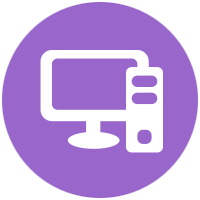GSC-14213-1 |
Improve the Image Quality of JPEG Images and MPEG Video Sequences |
US 6,760,487 B1 |
The Estimated Spectrum Adaptive Postfilter (ESAP) algorithm helps to improve the objective and subjective quality of these images as well as enhance their perceptual visual quality as compared to baseline JPEG images. |
GSC-15829-1 |
Pseudo random coding technique for 3D imaging |
US 9,081,096 B2 |
A high resolution 3-D imaging lidar system using a resolution enhanced pseudo random code technique that improves the ranging resolution by an order of magnitude with the same transmitted optical power. Further, multiple laser diodes can be used as transmitters and transmitter power can be scaled up by modulating many diode lasers simultaneously |
GSC-17465-1 |
HHT2 - Fringe Interference Algorithm |
US 8,144,331
US 8,913,844
US 9,013,490
|
This method provides spectral analysis of noisy nonlinear and non-stationary signals in 2-dimensions. The technology has the capability to detect fringe affects for optical instruments in real-time and offers significantly improved signal clarity at low incremental cost. |
GSC-16438-1 |
Self-Sacrificing Spacecraft |
US 9,171,266 |
When flying as part of formation flying or a swarm of crafts, these spacecraft can sacrifice themselves (give up their functionality) for the greater good of the entire system, thus enabling the continued operation of the other spacecraft in the mission. Upon self destruction, the crafts can donate their power source (fuel, battery) to another element of the swarm to reduce wasted energy resources. |
GSC-16461-1 |
Autonomic and Apoptotic Highly Distributed System |
US 8,983,882 |
This software mimics the biological mechanisms of autonomic and apoptotic systems (the process that shuts down cells when they no longer serve a purpose), providing self-management and security for a distributed system in which craft communicate and collaborate (ie. satellite swarms). Originally developed for space missions, this capability has now been extended for use in terrestrial applications involving cloud and grid-based systems, as well as other applications requiring highly distributed operation. |
GSC-17087-1 |
Detection of Unauthorized Computer Access and Other Anomalous Computer Activities |
US 9,749,342 |
This method uses scientific image analysis change detection software to track varied incoming streams of end users' time-series geo-location, environmental sensor data, and usage or performance characterization data from multiple devices. The end-user devices will consist of a workstation (e.g., desktop or laptop) and a personal mobile device (e.g., smartphone, tablet computer). |
GSC-15217-1 |
Radiation-Hardened, High-Data-Rate Ka-Band Modulator and Transmitter |
US 8,139,674 |
The higher frequencies made possible by this Ka-band modulator and transmitter offer many benefits both for space missions and commercial communications on Earth. Not only can more data be transferred as a result of higher link performance, but costs can be reduced because of smaller and lighter weight components, including a smaller antenna on the ground. |
GSC-16461-1 |
Autonomic and Apoptotic Highly Distributed System |
US 8,983,882 |
This software mimics the biological mechanisms of autonomic systems and apoptotic systems (the process that shuts down cells when they no longer serve a purpose). The software provides self-management and security for a distributed system such as a satellite swarm in which craft communicate and collaborate. Originally developed for space missions, this capability has now been extended for use in terrestrial applications involving cloud and grid-based systems, and other applications requiring highly distributed operation. |
GSC-17370-1 |
Universal and automated Monte Carlo method code for uncertainty propagation in large volume metrology databases |
US 9,990,335 |
The MCTU software offers a robust approach to characterizing and propagating the uncertainty in transformed metrology database targets based on the uncertainty in a rigid body constellation of targets involved in the transformation. |
GSC-15206-1
GSC-15206-2
GSC-15206-3
GSC-15206-4
GSC-15206-5
GSC-15206-6 |
Otoacoustic Protection In Biologically-Inspired Systems |
US 8,041,655
US 8,140,452
US 8,140,453
US 8,165,976
US 8,165,977
US 8,275,725
|
This innovation is an autonomic method capable of transmitting a neutralizing data signal to counteract a potentially harmful signal. This otoacoustic component of an autonomic unit can render a potentially harmful incoming signal inert. For self-managing systems, the technology can offer a self defense capability that brings new levels of automation and dependability to systems. |
GSC-16902-1 |
Radiation Hardened 10BASE-T Ethernet Physical Interface |
US 9,680,527 |
A radiation hardened 10BASE-T Ethernet solution that combines a custom circuit and a front-end field programmable gate array (FPGA) design to implement an Ethernet Physical Interface (PHY) in compliance with IEEE 802.3. The custom circuit uses available radiation-hardened parts, and handles the electrical interface between standard differential Ethernet signals and the digital signal levels in the FPGA. |
GSC-16730-1 |
Simulator System |
US 10,027,566 |
A modular communications architecture for distributed simulation systems. This provides developers with an interface for different types of synchronous communications. This software can be readily used by projects that use 1553 and/or SpaceWire communications. This technology provides a repeatable infrastructure to support the rapid development of distributed simulation components. |
GSC-15458-1 |
Space Link Extension Return Channel Frames (SLE-RCF) Software Library |
US 8,094,731 |
This software library enables a mission control center to receive telemetry frames from a ground station. The technology implements the SLE-RCF protocol as defined by the Consultative Committee for Space Data Systems (CCSDS). Software routines can be reused from mission to mission. |
GSC-16460-1 |
Autonomic Autopoiesis |
US 8,983,883 |
This technology is self-managing (self-configuring, self-healing, self-optimizing, and self-protecting). The system also features the property of autopoiesis (self-creation). When an agent automatically self-destructs due to security or other factors, the function performed by this agent is no longer in existence within the self-managing system. There is therefore a need for a mechanism that can auto-generate a replacement agent. This autopoietic agent may not necessarily be a clone of the original but can also be an alternative that provides equivalent functionality. |



